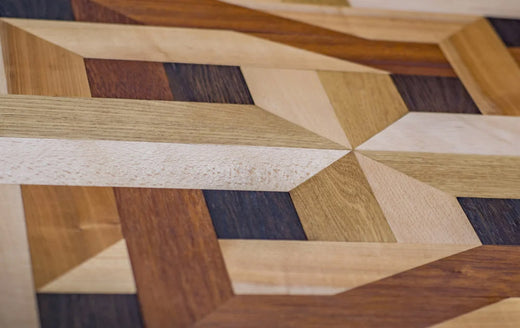Best Wood Types for Hardwood Floors
Posted by WOCA WOODCARE

When it comes to durability, the hardness of the wood you choose matters. This is why wood is measured on the Janka ball test scale of hardness. Wood higher on the scale will be less susceptible to scuffs and scrapes while the opposite is true for wood low on the scale.
Below, we share four of the best wood types for hardwood floors.
Oak
Oak is one of the most widely used wood types for hardwood floors due to its durability, versatility, and low expense. There are different types of oak that all vary in hardness. For example, red oak, named for its deep orange and red color, falls on the hardness scale around 1290. White oak, which has no red tones and a slightly yellow hue, falls on the hardness scale around 1360. Live oak is even harder at around 2680 on the Janka scale.
White oak is often used in boat construction and basements as engineered flooring. Though beautiful when stained a color, recent flooring trends are opting to leave the natural appearance of the wood. Methods like smoking, called wood fuming, give the wood a naturally aged appearance.
User-friendly products like WOCA Antique Lye are made specifically to create this effect on unfinished oak flooring. It reacts with tannic acid in Oak in the wood giving your floors a one-of-a-kind, smoked vintage look. Seal in the color and durability by following up with a plant-based oil like Diamond Oil Active.
Ash
Ash is a popular hardwood species that goes well with modern and traditional home decor styles. Its hardness lies close to white oak and is ideal because of its flexibility and how well it responds to humidity and cold.
Ash is durable enough for high-traffic areas but comfortable enough for bare feet.
Like all wood, ash is also very photosensitive meaning it can fade or yellow over time from UV rays. This is why you see old homes with wood floors that appear almost orange. Products like WOCA Wood Lye, give your hardwoods a white or grey wash while protecting them from yellowing over time. The result is one-of-a-kind floors with a driftwood aesthetic.
Maple
Maple is easily identifiable by its fine grain and light texture. Hardwood maple ranges in color from light cream to beige with a slightly red tint. Its hardness is higher than white oak and ash at 1450 on the Janka scale.
Maple holds up well to chair scrapes and scuff marks making it ideal for high traffic areas. The only drawback is the limited staining options. Maple stains very unevenly making it a better candidate for a natural finish.
With proper care, Maple will last generations before it starts to show signs of needing a replacement.
Bamboo
Bamboo is technically not wood, it's grass. But because it performs like other wood types for hardwood floors, it is an ideal choice. Bamboo is thought of as sustainable because bamboo plants reach maturity in just four years after being cut.
Bamboo is sold in the direction of the grain:
- Vertical - more of the grass is visible
- Horizontal - the ‘knees’ are visible
- Strand woven - strands pressed together
Strand woven bamboo is extremely hard at a whopping 3,000 on the wood hardness scale. After cutting, bamboo fibers are woven together to make them more durable. They are then put under compression, extreme heat, and pressure to make them into wood flooring. Despite their hardness, bamboo floors can be susceptible to water damage if proper installation is not followed.
Once prepared, bamboo can be stained any color to suit your style using stain primers like WOCA Pre-Color.
No matter which wood type for hardwood floors you choose, prevent them from dulling and fading over time by using the right cleaning products. We pride ourselves on creating sustainable, planted-based products that keep your hardwoods as beautiful as the day they were installed. And that’s a commitment to your health and the environment. Sign up for our subscription program to ensure you get the wood care products you need, on your schedule.
SHARE:

